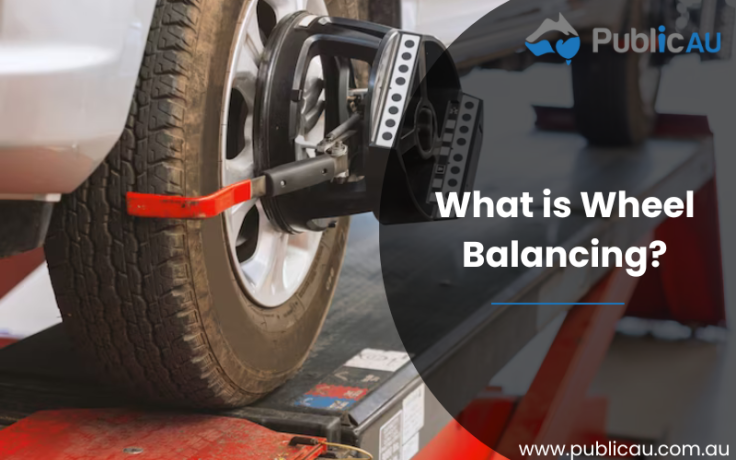
Welcome, fellow car enthusiasts and DIY mechanics! Today, we embark on a journey to decode one of the most curious conundrums in the automotive world: How much does a starter motor replacement cost in Australia.
Whether you’re facing an unexpected breakdown or simply curious about the potential financial implications, fear not! In this blog post, we will unveil all the secrets surrounding starter motor replacements – from average costs to factors that may affect pricing.
So buckle up and get ready to dive into this fascinating topic that might just save you some serious cash in the long run.
So let’s start with…
What is a Starter Motor?
A starter motor is an integral component of a vehicle’s engine, responsible for initiating the combustion process by turning the engine over. It is essentially an electric motor that uses electrical energy from the battery to rotate the flywheel and crankshaft, which in turn starts the engine.
The starter motor works in conjunction with other components such as the battery, ignition switch, and solenoid to generate enough power to get the engine going. The process begins when you turn your key or press a button to start your car. This action sends an electrical signal to the starter motor via the ignition switch, activating it to engage with the flywheel and crankshaft.
How Does a Starter Motor Work?
↳ The starter motor is a crucial component of your vehicle’s engine, responsible for starting the combustion process that ultimately powers your car. Without a functional starter motor, you won’t be able to start your vehicle and get it on the road. In this section, we will take a closer look at how exactly a starter motor works to provide power to your vehicle’s engine.
↳ Firstly, let’s understand the basic components of a starter motor. It consists of an electric motor, solenoid, gears, and brushes. The electric motor is powered by the battery and is connected to the flywheel or flex plate of the engine. The solenoid acts as an electromagnetic switch that activates the gear mechanism in order to engage with the flywheel and turn it.
↳ When you turn your ignition key or press the start button, an electrical signal is sent from the battery to the solenoid. This causes the solenoid to create a magnetic field which then pulls down its plunger and connects two large terminals together. These terminals are responsible for carrying high amounts of current from the battery directly to the starter motor.
↳ Once these terminals are connected, electricity flows through them into windings within the electric motor creating electromagnetism which gives rise to rotational force (torque).
↳ This torque rotates a small pinion gear attached at one end of an armature shaft inside of a Bendix drive assembly (a clutch-like mechanism) towards flywheel teeth on one side.
↳ As this happens simultaneously, there are two other important things happening. The first one is the engagement of a set of small teeth on one side of the Bendix drive assembly with the large teeth on the starter ring gear attached to the flywheel, which starts turning it. This process is called meshing.
↳ The second thing that happens is the brush contact through which electricity flows from the battery to the commutator rings of an armature shaft and then back out through a set of brushes again providing it energy to rotate continuously when activated by the starter switch.
↳ As soon as this rotation occurs, combustion starts within your engine and your vehicle comes to life. Once you release the ignition key or stop pressing the start button, electricity stops flowing into this circuit, allowing the solenoid plunger to return back to its original position thus opening up contacts inside it which cuts off current flow in half.
↳ This action simultaneously disengages both gear and Bendix drive mechanism from flywheel teeth and causes starter motor rotation to stop completely once again. At that point, all you have left is your running engine and you’re ready for a ride.
↳ In summary, a starter motor works by using electrical energy from the battery to create rotational force through electromagnetism. This force is used to engage with and turn the flywheel, which ultimately starts the engine and allows your vehicle to run. Once the engine is running, the starter motor disengages and is no longer needed until the next time you start your car.
How Much Does a Starter Motor Replacement Cost in Australia?
If you have an older car, you may be able to find a used starter motor for a lower price. The average cost varies between $550 and $1100, but this depends on the factors mentioned below. Before you purchase a second-hand part, make sure that it is compatible with your vehicle.
Factor Affects Cost Of Starter Motor Replacement
The cost of a starter motor replacement can vary greatly depending on several factors. In this section, we will discuss the main factors that can affect the cost of a starter motor replacement in Australia.
🚧 Type of Vehicle:
One of the primary factors that can impact the cost of a starter motor replacement is the type of vehicle you have. The make and model of your car will determine the type and size of starter motor needed, which can significantly vary in price. Generally, luxury or high-end vehicles will have more expensive starter motors compared to economy cars.
🚧 Quality and Brand:
The quality and brand of the starter motor also play a significant role in its cost. Cheaper aftermarket options may be available, but it is crucial to consider their reliability and durability as they may not last as long as higher-quality brands. Original Equipment Manufacturer (OEM) parts are usually more expensive but are considered to be the best option for optimal performance and longevity.
🚧 Condition and Age:
If your vehicle is older or has been driven for an extended period, there is a higher chance that its starter motor needs replacing due to wear and tear over time. In this case, you may need additional repairs or replacements such as bolts, gaskets, or other small components that can add up to the overall cost.
🚧 Location:
The location where you get your car serviced can also affect the cost of a starter motor replacement. Labor rates vary from one shop to another, so it’s essential to do some research
When Should I Get a New Starter Motor?
When it comes to the health and longevity of your vehicle, one crucial component that plays a significant role in its functioning is the starter motor. It is responsible for initiating the engine’s combustion process by turning the crankshaft, which, in turn, starts the engine. However, like any other mechanical part, starter motors can wear out over time and may need to be replaced.
But how do you know when it’s time to get a new starter motor? And why should you bother replacing it in the first place? In this section, we will delve into all the details about why and when you should consider getting a new starter motor for your car.
Why Should I Get a New Starter Motor?
🔧 Frequent Starting Issues:
One of the most common signs that indicate a failing starter motor is difficulty starting your vehicle. If you have trouble starting your car, such as having to turn the key multiple times before it cranks or hearing clicking sounds when trying to start the engine, it could be due to a faulty starter motor.
🔧 Wear and Tear:
Like any other mechanical part, starter motors are subject to wear and tear over time. The constant use of starting your vehicle takes a toll on its components, causing them to deteriorate gradually. This can lead to malfunctions or complete failure of the starter motor.
🔧 Age:
Another factor that contributes to a failing starter motor is age. On average, starter motors have a lifespan of around 100,000 miles or 7- 10 years, depending on the make and model of your vehicle. If your car is nearing this mark, it’s worth considering getting a new starter motor to avoid unexpected breakdowns.
🔧 Electrical Issues:
Starter motors rely on a healthy electrical system to function correctly. If there are any problems with the battery, alternator, or other electrical components, it can affect the performance of the starter motor. In such cases, replacing the starter motor may be necessary to fix the issue.
What Are The Symptoms of a Faulty Starter Motor?
A faulty starter motor is a common issue that can cause frustration and inconvenience for car owners. It is responsible for turning the engine over and starting it, so when it malfunctions, getting your car to start can become a struggle. In this section, we will discuss the most common symptoms of a faulty starter motor, so you can be aware of them and take action if necessary.
⚙️ Clicking or grinding noise when trying to start the engine
One of the most obvious signs of a faulty starter motor is a clicking or grinding noise when attempting to start the car. This sound usually indicates that there is an issue with the gears inside the starter motor not engaging properly. If you hear this noise consistently when trying to start your vehicle, it could be time for a replacement.
⚙️ Engine cranks slowly or does not crank at all
Another symptom of a faulty starter motor is slow or no cranking of the engine when turning the key in the ignition. This happens because the starter motor is unable to provide enough power to turn over the engine effectively. In some cases, you may hear a single click or no sound at all when trying to start your vehicle.
⚙️ Frequent need for jump-starts
If you find yourself needing frequent jump-starts even after replacing your battery, then it could be due to a faulty starter motor. A damaged starter motor will drain your battery quickly as it struggles to get your engine running.
⚙️ Smoke coming from under the hood
Smoke coming from under the hood is never a good sign and can indicate several issues, including a faulty starter motor. This could be caused by overheating due to electrical problems or damaged components within the starter motor.
⚙️ Oil leaks
An oil leak could also be a sign of a faulty starter motor. The starter motor is located near the bottom of the engine and is exposed to oil leaks from other components. If you notice oil pooling around the starter motor, it could be a result of damage to its seals or gaskets.
⚙️ Visible damage to the starter motor
If you are able to visually inspect your starter motor, look for any visible signs of damage such as cracks, corrosion, or loose connections. These can all indicate that your starter motor is failing and needs to be replaced.
⚙️ Dashboard warning lights
Some modern cars have dashboard warning lights that may illuminate if there is an issue with the starter motor. If you see any warning lights related to the battery or starting system, it could be an indication that your starter motor needs attention.
Also Read: Engine Replacement Cost Australia



